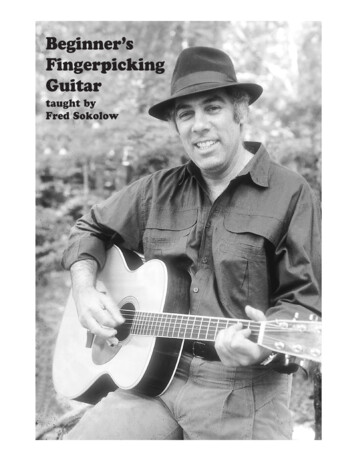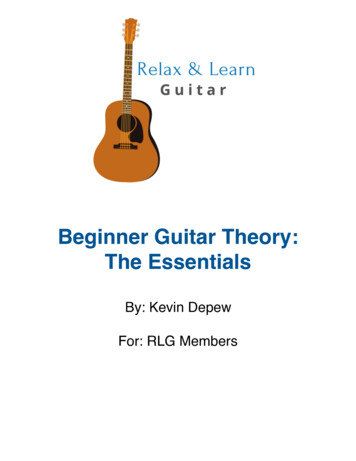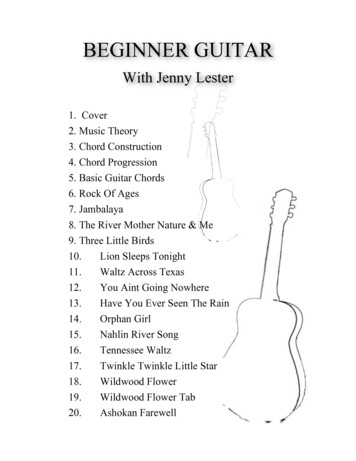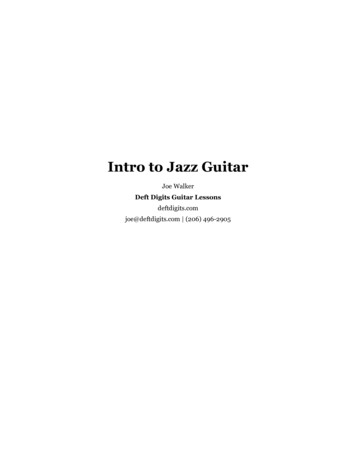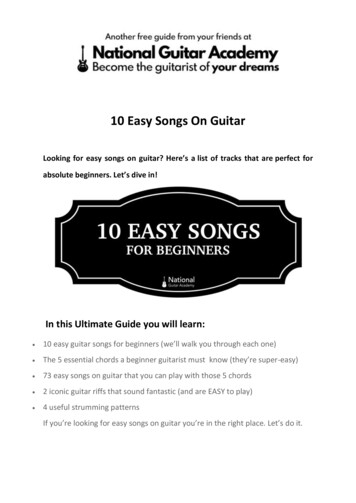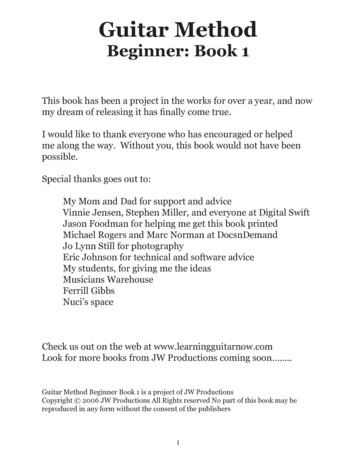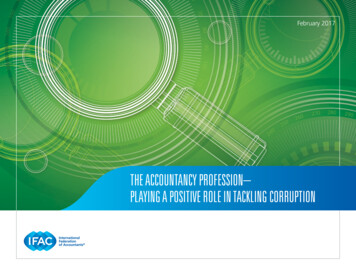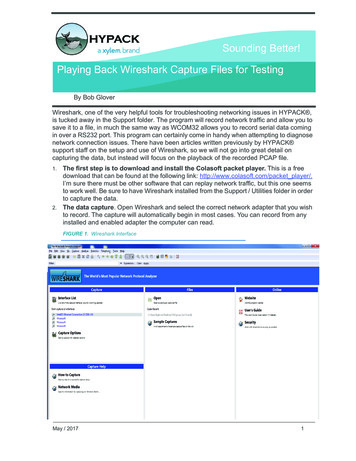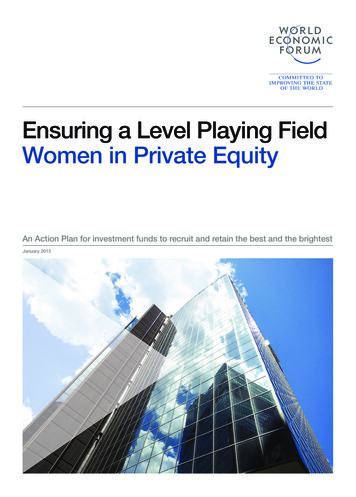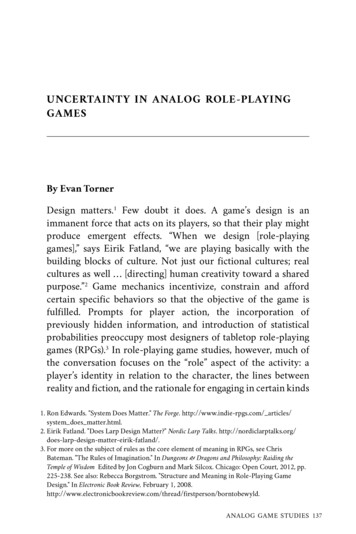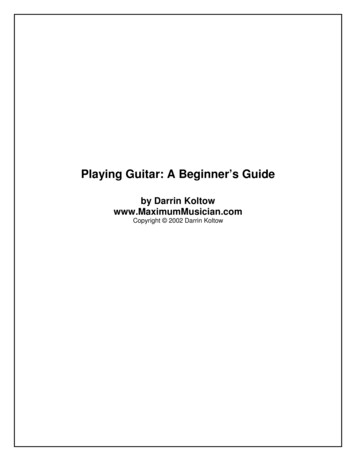
Transcription
Playing Guitar: A Beginner’s Guideby Darrin Koltowwww.MaximumMusician.comCopyright 2002 Darrin Koltow
Playing Guitar: A Beginner’s GuidePage 2ContentsContents. 2Acknowledgements . 4Also on MaximumMusician.com . 5Also at MaximumMusician.com. 5Introduction. 6About the Author . 6Practicing . 7How to Hold the Guitar . 8Tablature and Chord Diagrams. 9Tablature. 9Resources . 10Chord Diagrams. 11Resources . 11Tuning . 12Resources . 13The First Song. 14The Song . 14How the Song Works (Basic Music Theory) . 14Resources . 15Basic Chords . 16Resources . 16Barre Chords . 17Minor, Root on String 6 . 17Minor, Root on String 5 . 18Major, Root on String 6 . 19Major, Root on String 5 . 19Dominant 7, Root on String 6 . 19Dominant 7, Root on String 5 . 19Resources . 20The Right Hand . 21Strumming . 21Resources . 21Melody: Alternate Picking. 22Resources . 22Chords: Bass Note Picking . 23Improvising . 24Resources . 25Closing Note. 26Appendix . 27The Major Scale. 27Major Scale Pattern 1: E Major . 28Major Scale Pattern 2: D Major . 29Major Scale Pattern 3: C Major . 30Major Scale Pattern 4: A Major . 31Major Scale Pattern 5: G Major . 32Resources . 32Playing by Ear. 33
Playing Guitar: A Beginner’s GuidePage 3The Short Version . 34The Long Version . 34Resources . 35Introduction to Reading Music. 36Common open Position Chords . 37Chords for C Major . 37Chords for E Major . 37Chords for A Major . 37Chords for G Major . 38Chords for D Major . 38Chords for F Major. 38Resources . 38Notes on the Fretboard . 39Index . 40The Next Step . 41
Playing Guitar: A Beginner’s GuidePage 4AcknowledgementsThis ebook is more than just one person wanting to help others play guitar moreeffectively. The inspiration and knowledge gained from other resources has helped makethis ebook helpful for you. One of those resources is GuitarNoise.com. GuitarNoise.comhas lessons for guitarists of every skill level, covering many, many aspects of playingguitar. This includes advice on careers, “Scary Stories,” detailed lessons on playingpopular songs, songwriting, forums and much more. It’s hard to imagine a guitarist whowould not benefit from GuitarNoise.com materials. Visit them often, atwww.GuitarNoise.com.
Playing Guitar: A Beginner’s GuidePage 5Also on MaximumMusician.comWant to know how to turn your practicing into playing? Would you like to learn whichsites, newsgroups, discussion lists and other web resources are the best for learning toplay guitar?The articles on MaximumMusician.com can help you. You can learn to Play by Ear . Learn All About Chords atwww.MaximumMusician.com/ChordsIntro.htm. Other articles help you turn scalesand chords into music, and sort through the glut of guitar info on the web.Also at MaximumMusician.comBlues Grooves for Beginners and BeyondDownloadable eGuide 2003 Darrin Koltow Eguide for Windows 95, 98, 2000, NT, Macintosh in WinZippedPDF formatBlues Grooves for Beginners and Beyond shows you how toplay blues shuffles, boogies, riffs and progressions. Playingblues rhythms is one of the easiest, quickest ways of gettinggreat sounds from your guitar. This guide shows you how to getthose sounds.Blues Grooves teaches you the basic 12-bar blues turnarounds, riffs, and shuffles how to create your own blues grooves how to enhance basic shuffles with harmony notes how to jazz up your blues with the dominant 9 sound andappogiatura chords open position and movable blues how to create riffs using arpeggios, as well as the mixolydian, pentatonic andblues scalesAnd much more. Get the details – including a free sample – tareBook.htm
Playing Guitar: A Beginner’s GuidePage 6IntroductionThis book is for all beginning guitarists, especially those who don’t yet believe they canplay the guitar.It was written because beginning guitarists need guidance. They need to know whichchords and concepts to begin with, and which ones to ignore. There’s a lot of informationavailable today to the beginning guitarist. In fact, there’s too much information: it’s easyto become overwhelmed with all the different exercises and songs to play. This bookcuts through the clutter to get you started playing songs as quickly as possible. It alsogives you tips on where to go for more information.I believe the most important things about playing guitar are to have fun and to grow as amusician. When you can do these things, I believe you also grow as a person, no matterwhat style of music you want to play.About the AuthorHi, I’m Darrin Koltow. I’ve been playing guitar since 1985. I’ve studied music theory andhistory at Rutgers College, and guitar with a number of teachers, including Bill Hart, whohas taught at the Atlanta Institute of Music. I’ve also studied the strategies for successand motivation from other disciplines and adapted them to musicianship. I’m nowapplying this training to my mission: to be the best player I can be, to enjoy the journeyto becoming such a player, and to help others achieve their musical goals. Contact meat www.MaximumMusician.com/feedbackdsk.htm
Playing Guitar: A Beginner’s GuidePage 7PracticingHere are a few notes about how to approach practicing with the best frame of mind.First, don’t hurt yourself, especially when you’re just starting. You may be 100%motivated to learn, but you won’t learn anything if you damage your hand fromoverplaying. It’s easy to do that when you start, because your hands simply haven’t builtup the muscles they need to play yet. This is more of a problem with acoustic steel stringguitarists than electric guitarists, because steel string guitars are generally harder toplay. Give it a little time; the hand strength will come.You’ll want to get some essential tools besides the guitar. Get a metronome, and ajournal. The metronome helps you play in time, but does more than just that. It forcesyou to play music, and not rambling notes and chords. Keeping time with the metronomemakes you push yourself beyond your comfort zone, so you can grow as a player.You say you’re not a writer. That’s okay, but get a journal anyway, and use it to writedown how well you think you’re doing. You don’t need to write in it every day. But whenyou’ve spent three weeks working on a song or scale or arpeggio exercise, write downhow it felt to complete it. Also, write down the things you can’t yet do. A year from now,you’ll look at what you wrote, and feel great pride at how far you’ve come.Good attitude is crucial to your sense of achievement. Putting yourself down becauseyou can’t yet make a particular chord shape is not nearly as helpful to you as moving onto another chord shape, or reviewing the chords you do know. The technique will come,trust me. Stay motivated by writing your goals down, and rewriting them regularly. Readhow others grew from having no skill, to being players.Play for others, maybe a little before you believe you’re ready. Smooth your playing on asong or two, and play them for someone. You’ll get a whole new perspective on yourplaying, and what you need to work on. Besides that, any compliments you get willmotivate you in a powerful way.
Playing Guitar: A Beginner’s GuidePage 8How to Hold the GuitarRemember to breathe. It’s easy for your body to get tense when you do something asawkward as playing guitar for the first time. This tenseness builds up without your evenrealizing it. Take a break every so often, and just breathe.Even if you do everything right, playing might seem uncomfortable at first. It should notbe painful, though. If you sense any pain at any time, stop immediately. Before long,your desire to play will make not holding the guitar feel uncomfortable.Choose a chair or seat with the right height. You’ll know it’s the right height because
Keep the guitar straight. The neck of the guitar should be angled slightly upward as it extends away from your body. Now for the fretting hand. Practice making what I call “the claw“ with your left hand. This means putting your left thumb halfway between the bottom of the guitar’s neck, and the top of the neck. It’s tempting to grab the guitar like you were grabbing a hammer, withFile Size: 414KBPage Count: 41


